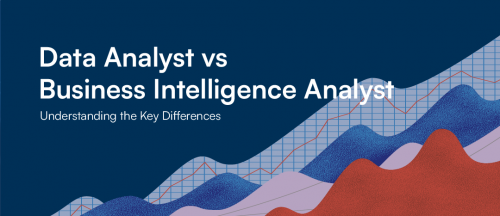

An analysis of the probable impact of the AI act on data visualization

Introduction:
AI is the new trending subject in the working and scientific worlds. Its enormous potential has not gone unnoticed by us, and many of the world’s companies have launched profit analyses on the investment of these artificial intelligences. However, the rapid explosion in the use of this incredible tool in recent years has prompted the authorities to look at the rules to be introduced. This is how the AI act, a proposition to ensure the ethical and responsible development and use of AI systems within the European Union, is born.
In the last weeks, this AI act has been approved and adopted by the European council. This, of course, will have an impact on a lot of data oriented activities through many enterprises. The role of this article is to evaluate what could and will be this impact on a particular field: data visualization.

Transparency and accountability:
One of the primary areas of impact is in ensuring transparency and accountability in AI-driven data visualization tools. The AI Act emphasizes the importance of transparency in AI systems, requiring developers to provide clear explanations of how algorithms function, including those utilized in data visualization applications. This mandate aims to enhance users’ understanding of the insights presented through visualization tools, fostering trust in AI-powered visualizations.
This law will therefore divide users from developers. Indeed, it will become much easier for users to check their sources and therefore analyse the quality of the algorithm created by the developer, and a more in-depth critique of the various systems on the market
will be possible. This may put some algorithms at a disadvantage in favour of others.

Fundamental rights:
Another essential law provided by the AI act concerns the most fundamental rights. It introduces requirements for AI systems to be designed and deployed in a manner that upholds those human principles. In the context of data visualization, this translates to ensuring that visualizations do not perpetuate bias or discrimination. Developers must prioritize fairness and non-discrimination in the design and deployment of AI-driven visualization tools, mitigating the risk of biased or misleading representations of data.
GDPR:
Additionally, the AI Act imposes obligations regarding data protection and privacy, which directly impact the data use. Indeed, thanks to AI, all kinds of personal data can be used to analyse, forecast and influence human behavior. That opportunity transforms such data and the outcomes of their processing into valuable commodities. The principle risk is to lead into what is called a state of extreme “capitalist surveillance” which means that with the aid of your data, an AI could surveil you to offer and influence marketable decisions.
If we take the particular case of the visualization tools, they often rely on large datasets. Thus, ensuring compliance with data protection regulations is paramount. Developers must implement robust data protection measures, including anonymization and encryption, to safeguard individuals’ privacy rights when processing and visualizing data.
This is maybe the greatest challenge when using AI systems for analyzing GDPR-sensible data. Indeed, the European General Data Protection Regulation is already the most comprehensive privacy set of rules in the world. Taking it into consideration when developing AI tools will challenge and inevitably slow down their creation. But has also the huge benefit to leave the user more in control of what part of his data, of him, can be processed and reused.

Regulatory compliance:
The last point of this article will be a regulatory perspective of this AI act. Indeed, it introduces mechanisms for oversight and enforcement to ensure compliance with its provisions. Regulatory bodies will be empowered to assess AI systems’ conformity with legal requirements, including those related to data visualization. Non-compliant entities may face significant penalties, incentivizing adherence to the Act’s provisions and fostering accountability in the development and deployment of AI-driven visualization tools.
Conclusion:
In conclusion, the AI Act represents a significant regulatory framework that will shape the future of data visualization in the EU. By prioritizing transparency, fairness, and data protection, the Act aims to promote responsible AI deployment and mitigate potential risks associated with AI-driven visualization tools. Compliance with the Act’s provisions will be crucial for developers and organizations operating in the data visualization space, ensuring that their practices align with ethical and legal standards in the era of AI.
As the AI act, the first comprehensive AI law, only applies for the European Economic Area and has no comparison for now across the world, another impact could be imagined. As explained through the article, Europe could be at a disadvantage in a developer’s perspective. Indeed, it will be easier for those to create their AI product for another, less legally-constricted area. The future will tell us if that will lead to a delay in Europe compared to the rest of the world.
Pr. Giovanni Sartor, The impact of the General Data Protection Regulation (GDPR) on artificial intelligence, June 2020, <EPRS_STU(2020)641530_EN.pdf (europa.eu)>
Gai Sher & Ariela Benchlouch, The privacy paradox with AI, October 2023, <The privacy paradox with AI | Reuters>
Council of the European Union, Proposal for a Regulation of the European Parliament and of the Council laying down harmonised rules on artificial intelligence (Artificial Intelligence Act) and amending certain Union legislative acts, March 2024, <EPRS_STU(2020)641530_EN.pdf (europa.eu)>
Eurofi magazine, AI Act and its impacts on the European financial sector, February 2024, <AI Act and its impacts on the European financial sector – European Union (europa.eu)>
European Parliament press, Artificial Intelligence Act: deal on comprehensive rules for trustworthy AI, December 2023, <Artificial Intelligence Act: deal on comprehensive rules for trustworthy AI | News | European Parliament (europa.eu)>
Eleonora Francica, As the AI Act becomes law, concern about its impact spreads, March 2024, <As the AI Act becomes law, concern about its impact spreads | Science|Business (sciencebusiness.net)>
Martini Anzini, The Artificial Intelligence Act Proposal and its Implications for Member States, September 2021, <The Artificial Intelligence Act Proposal and its Implications for Member States – Eipa>






